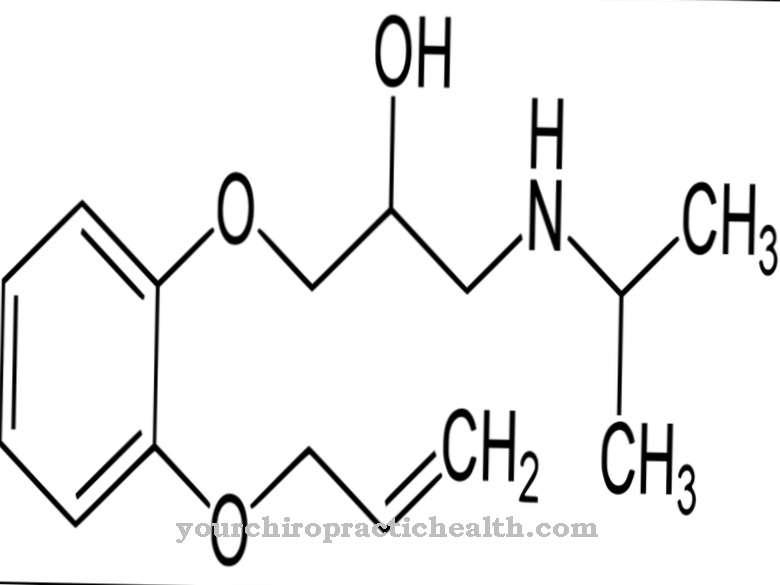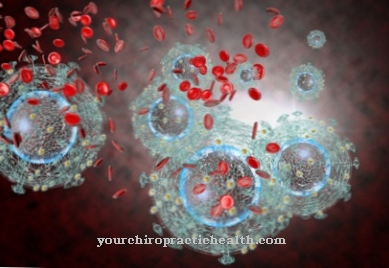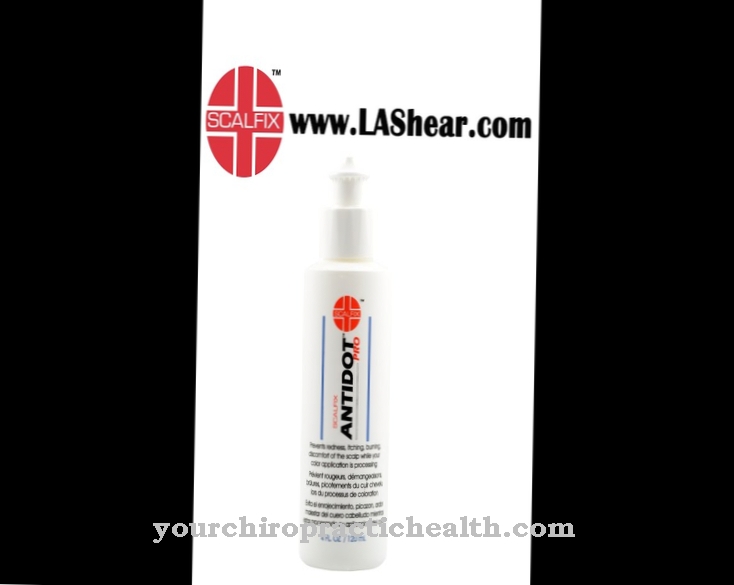Amodiaquine is an active ingredient that is used to treat malaria. It is used as a mono- and combination preparation, in particular against malaria tropica, which is triggered by the single-cell parasite Plasmodium falciparum.
What is amodiaquine?

Amodiaquine is an aromatic hydrocarbon. It belongs to the group of 4-aminocholines and is closely related to the active ingredient chloroquine. Just like chloroquine, amodiaquine is also used against malaria, especially malaria tropica.
Malaria tropica is caused by the unicellular parasite Plasmodium falciparum and is one of the most important infectious diseases worldwide. The WHO (World Health Organization) reports for the year 2008 of 243 million sick people and of well over 800,000 deaths. The main distribution area of malaria is in tropical Africa, but Asia and South America are also affected.
Amodiaquine was previously sold under the trade name Camoquin® in Europe and the USA. However, it is no longer in trade there, but is only used in areas with a high occurrence of malaria. The active ingredient requires a prescription.
Pharmacological effect
The pharmacological mode of action of amodiaquine corresponds to that of the better-known active ingredient chloroquine. Both substances intervene in the reproduction cycle of the malaria pathogen Plasmodium falciparum.
These unicellular parasites live mainly in the red blood cells of humans and are transmitted by mosquitoes. If an anopheles mosquito infected with plasmodia stings a person, the pathogens first penetrate the liver. The so-called "liver phase" begins. In the next phase, the parasites pass into the blood and migrate to the red blood cells (erythrocytes).
In this "erythrocytic phase" the effect of the amodiaquins begins. The substance inhibits the crystallization of hemozoin. This occurs when the malaria pathogens break down the hemoglobin in the erythrocytes. If the hemozoin cannot be crystallized, the pathogen cannot obtain any proteins from it for its metabolism and dies.
Chloroquine used to be the drug of choice for malaria and was mainly used in the 1950s and 1960s. Today, however, almost all strains of Plasmodium falciparum are resistant to chloroquine. As a result, the active ingredient amodiaquine, which is also effective against chloroquine-resistant parasites, gained in importance.
Medical application & use
Amodiaquine is used against the pathogen Plasmodium falciparum. This causes the malaria tropica, which is considered the most dangerous form of malaria. A distinction is made between the complicated and the uncomplicated course of malaria tropica. In complicated tropical malaria, the central nervous system or the kidneys are also involved.
Other organ complications can also occur. This form of malaria is always an emergency and requires intensive medical care. Amodiaquine is only suitable for the treatment of the uncomplicated tropic malaria. Amodiaquine is one of the drugs that work well on pathogens that are resistant to other substances. Recently, researchers are increasingly testing the use of amodiaquine in combination products. For example, it is combined with the active ingredient artesunate, to which there is also hardly any resistance.
Initial data show that the active ingredient amodiaquine in combination with artesunate is very effective and well tolerated. The main indication for the use of artesunate / amodiaquine is in the treatment of uncomplicated tropic malaria. The combination of active ingredients is mainly used when the corresponding Plasmodium strain is resistant to the standard drugs.
Risks & side effects
Amodiaquine should only be used for a short time. If the drug is taken for a long time, its breakdown products lead to liver damage and disorders in the blood-forming system. Due to the serious side effects, amodiaquine monopreparations were withdrawn from the market in Europe and the USA.
However, due to its low price and the good effectiveness on chloroquine-resistant plasmodia, it is still used frequently in non-European countries. In new preparations, amodiaquine is often used in combination with other active ingredients, for example with artesunate.
In these combination preparations, the amodiaquine can be dosed lower. No serious side effects have been observed with these drugs to date. Amodiaquine should never be used in people who already have liver disease or kidney damage.




























.jpg)